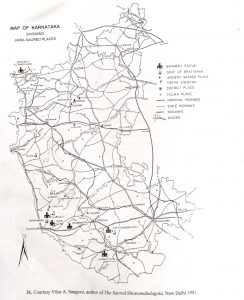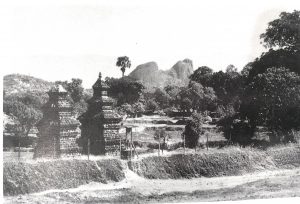Karnataka

Present-day Karnataka, that southern highland in which India’s first free-standing monolithic statue of colossal size was envisaged and hewn out of an upright boulder of granite, is a pleasant state to travel in. The landscape is varied and seldom dreary, the climate healthy, the people one meets lovable and hospitable.
We do not know for certain when Jainism entered Karnataka and the other regions. in the south; yet having encountered Gujarati Jaina monks and nuns at places like Kolhapur and Bangalore in the far south and southern monks from Belgaum in far- away Bihar, one is inclined to favour the view of those scholars who consider it likely that Jaina ascetics must have walked southward soon after Mahavira’s death, learned the language of the people they met and started to spread Jaina culture.
Documented Jaina history in Karnataka, however, begins with the conversion of the first Ganga king to the teaching of Mahavira by the Jaina monk Acharya Simhanandi. That may have taken place some time in the third century AD.
In the course of time other royal families, notably those of Badami and Halebid, followed suit. It was a time of amity between Hindus, Jainas and Buddhists which lasted for many centuries, with occasional and temporary lapses into persecution of Jainas and Buddhists by Hindus.
By and by, when it became opportune for kings and princes to shift their main allegiance from Jainism to either Vedanta or Bhakti Hinduism, the movements initiated by the great Hindu teachers Shankara and Ramanuja respectively, instances were not wanting of royal families in which the kings declared themselves followers of Shiva or Vishnu whereas their wives remained faithful to the Jaina Tirthankaras.
According to “old dedicatory inscriptions a great number of Jaina temples and sculptures were commissioned by queens and the mothers and sisters of kings.
Our survey of Jaina sites in Karnataka, necessarily limited, begins with Aihole  in the north and ends with the Bahubali at Gommatagiri in the South.
in the north and ends with the Bahubali at Gommatagiri in the South.
Landscape near Moodabidri with tombs of Jaina Bhat- tarakas. Monuments of this kind are not found elsewhere.
